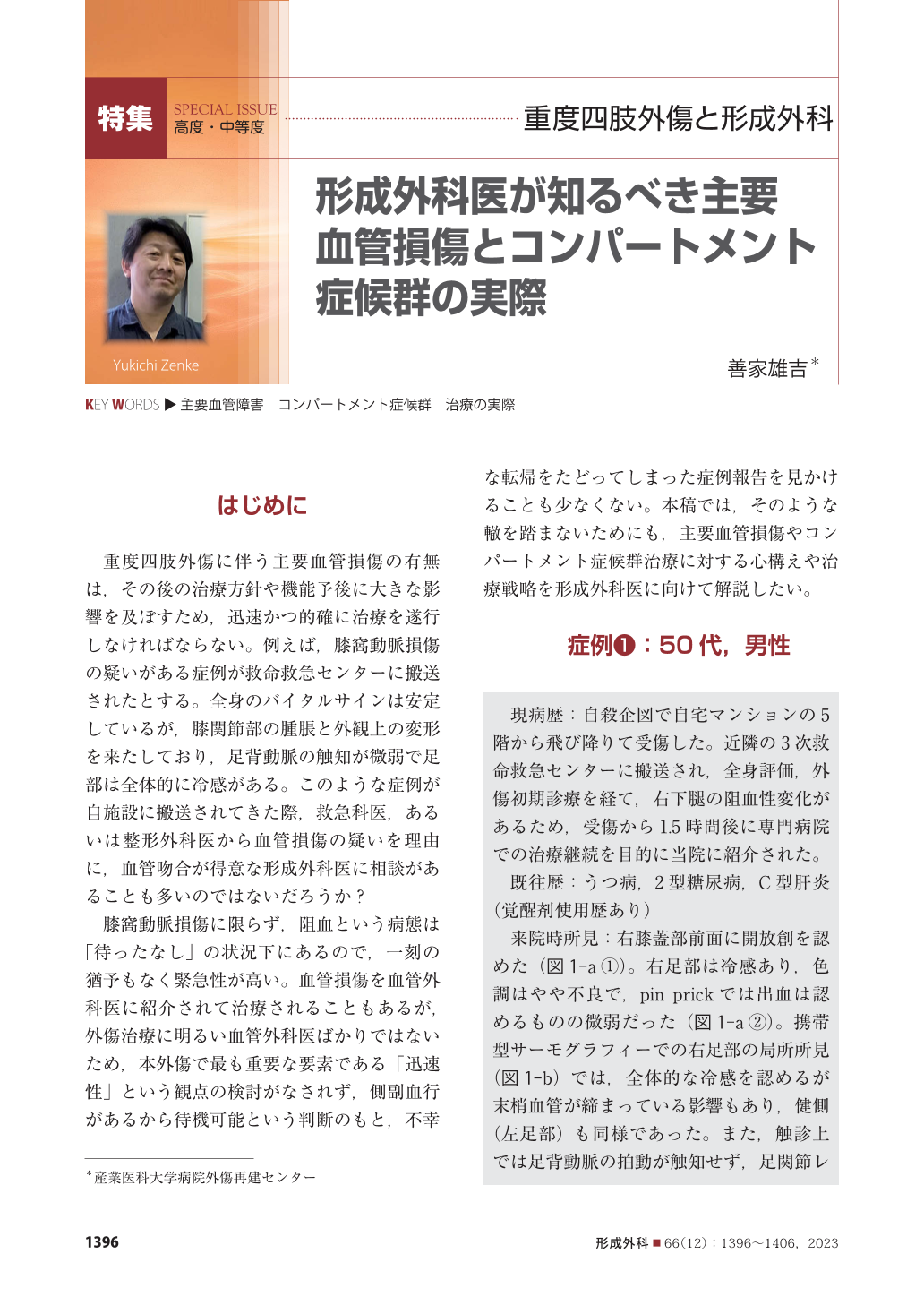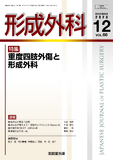Japanese
English
- 有料閲覧
- Abstract 文献概要
- 1ページ目 Look Inside
- 参考文献 Reference
はじめに
重度四肢外傷に伴う主要血管損傷の有無は,その後の治療方針や機能予後に大きな影響を及ぼすため,迅速かつ的確に治療を遂行しなければならない。例えば,膝窩動脈損傷の疑いがある症例が救命救急センターに搬送されたとする。全身のバイタルサインは安定しているが,膝関節部の腫脹と外観上の変形を来たしており,足背動脈の触知が微弱で足部は全体的に冷感がある。このような症例が自施設に搬送されてきた際,救急科医,あるいは整形外科医から血管損傷の疑いを理由に,血管吻合が得意な形成外科医に相談があることも多いのではないだろうか?
膝窩動脈損傷に限らず,阻血という病態は「待ったなし」の状況下にあるので,一刻の猶予もなく緊急性が高い。血管損傷を血管外科医に紹介されて治療されることもあるが,外傷治療に明るい血管外科医ばかりではないため,本外傷で最も重要な要素である「迅速性」という観点の検討がなされず,側副血行があるから待機可能という判断のもと,不幸な転帰をたどってしまった症例報告を見かけることも少なくない。本稿では,そのような轍を踏まないためにも,主要血管損傷やコンパートメント症候群治療に対する心構えや治療戦略を形成外科医に向けて解説したい。
The presence or absence of major vascular injuries associated with severe extremity trauma significantly impacts the subsequent treatment strategy and functional prognosis, and thus prompt and appropriate treatment must be provided. For example, a patient suspected of having a popliteal artery injury is admitted to an emergency department. The patientʼs systemic vital signs are stable, but the knee joint is swollen and visually deformed, the dorsalis pedis artery is not well palpable, and the tactile sensation of the foot is generally cold. When your team encounters such a case, the emergency physician and/or orthopedic surgeon may suspect a vascular injury and often consult with you, a plastic surgeon specializing in vascular anastomosis.
Not only knee-artery injuries but also other conditions of hemodynamic inhibition are quite urgent situations in which there is no time to spare. Vascular injuries are sometimes referred to vascular surgeons for treatment. However, because not all vascular surgeons are familiar with trauma treatment, the most critical factor in the trauma, i.e., “promptness,” may not be considered. We often see case reports of unfortunate outcomes based on the judgment that the patient can wait because of collateral blood supply. Such case reports will be discussed in this session, in which we will also explain to plastic surgeons the preparation and treatment strategies for major vascular injuries and compartment-syndrome treatment to avoid such failures.

Copyright© 2023 KOKUSEIDO CO., LTD. All Rights Reserved.


